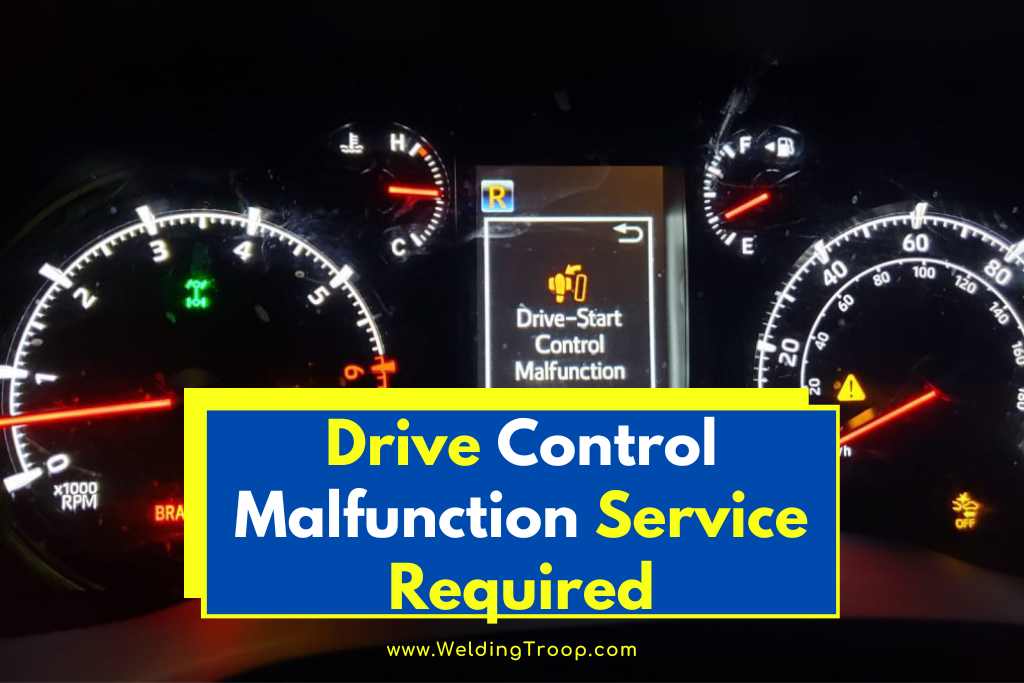The drive control malfunction service required error can be a frustrating experience for any car owner. Whether you’re driving a Lincoln MKZ or a Navigator, encountering this error message on your dashboard can leave you feeling puzzled and concerned.
In this comprehensive guide, we will explore the causes, symptoms, and solutions to the drive control malfunction service required error.
By understanding the intricacies of your vehicle’s drive control system, you’ll be better equipped to handle and resolve this issue.
Table of Contents
Understanding the Drive Control System
The drive control system is a crucial component of modern vehicles, designed to enhance safety and prevent collisions.
This system works by communicating with your car’s electronic control unit (ECU) to monitor and regulate engine power in response to sudden changes in braking or acceleration.
For example, if the drive control system detects that you’ve selected the wrong gear while pressing the accelerator, it will reduce engine power to prevent sudden acceleration.
Symptoms of Drive Control Malfunction
When your drive control system malfunctions, it can manifest in various symptoms and error messages on your dashboard. Some common symptoms of drive control malfunction include:
- Difficulty starting the vehicle
- Loss of power or inability to attain high speeds
- Reduced stability and increased vulnerability to skidding
- Erratic automatic start or stop functionality
- Warning messages such as “Drive Control Malfunction Service Required”
If you experience any of these symptoms, it’s important to address the issue promptly to ensure your safety on the road.
Read also >> Drive-Start Control Malfunction (Step by Step Guide!)
Common Causes of Drive Control Malfunction
Several factors can contribute to a drive control malfunction service required error. Understanding these causes can help you diagnose and resolve the issue effectively. Here are some common culprits:
1. Faulty Electronic Control Unit (ECU)
A malfunctioning ECU can inaccurately interpret data from your vehicle’s sensors, leading to errors in managing essential functions.
This can affect the control and activation of solenoids and actuators, causing the drive control system to malfunction.
2. Defective Ignition Coil
The ignition coil plays a crucial role in starting your engine. If it begins to fail, it can cause a range of problems, including flashing check engine lights, engine misfires, rough idling, slow acceleration, stalling, and loss of power.
These issues can impact the performance of your drive control system.
3. Faulty Fuses
Faulty fuses can trigger a drive control system malfunction. When fuses protecting your central engine unit or battery components blow, it can disrupt the functioning of the drive control system.
Sudden spikes in amperage can cause fuses to trip, leading to a range of problems.
4. ABS Sensor Malfunction
The ABS sensor is responsible for detecting the speed of each wheel in your vehicle. Over time, dirt and debris can accumulate, affecting the sensor’s performance.
When the ABS sensor is compromised, it may struggle to receive and implement data from the drive control system, resulting in error messages.
5. Battery Issues
An unhealthy battery can cause starting or stalling problems that interfere with the drive control system’s functionality.
The drive control system relies on the battery to start, stop, or limit engine power effectively. If the battery is weak or faulty, it can impact the overall performance of the system.
Solutions to Drive Control Malfunction
Resolving the drive control malfunction service required error depends on accurately diagnosing the underlying cause. Here are some solutions to consider:
1. Professional Diagnosis and Repair
If you’re not familiar with vehicle mechanics, it’s advisable to take your car to a certified auto repair shop or dealership.
A professional mechanic can accurately diagnose the issue using specialized equipment and experience. They will be able to determine the root cause of the drive control malfunction and perform the necessary repairs.
2. Check Wiring Connections
Sometimes, drive control malfunctions can be caused by loose, worn, or disconnected wires. Inspect the wiring connections in your vehicle, paying close attention to those related to the drive control system.
If you notice any issues, such as loose or damaged wires, it’s essential to address them promptly.
3. Clean ABS Sensor
If you suspect that a dirty ABS sensor is causing the error, you can try cleaning it. Locate the ABS sensor, which is typically mounted near the wheel, and carefully disassemble it.
Use a soft cloth to clean off any dirt or debris, avoiding the use of detergents or water. Reinstall the sensor and monitor if the error persists.
4. Replace Faulty Fuses
If a blown fuse is the culprit behind the drive control malfunction, you can replace it yourself. Most drivers consider fixing a blown fuse a relatively easy repair.
However, if you’re unsure, it’s best to consult a professional or refer to your vehicle’s manual for guidance.
5. Address Battery Issues
If you suspect that a weak or faulty battery is causing the drive control malfunction, consider checking the battery connections and the state of charge.
Ensure that the connections are secure and free from corrosion. If necessary, charge or replace the battery to restore optimal functionality.
Conclusion
Encountering a drive control malfunction service required error can be frustrating, but it’s essential to address the issue promptly for your safety and the performance of your vehicle.
By understanding the causes, symptoms, and solutions discussed in this guide, you’ll be better equipped to diagnose and resolve drive control malfunctions effectively.
Remember, if you’re unsure or uncomfortable performing repairs yourself, seek assistance from a qualified mechanic or dealership to ensure the problem is resolved correctly. Stay safe on the roads and enjoy the optimal performance of your vehicle.

